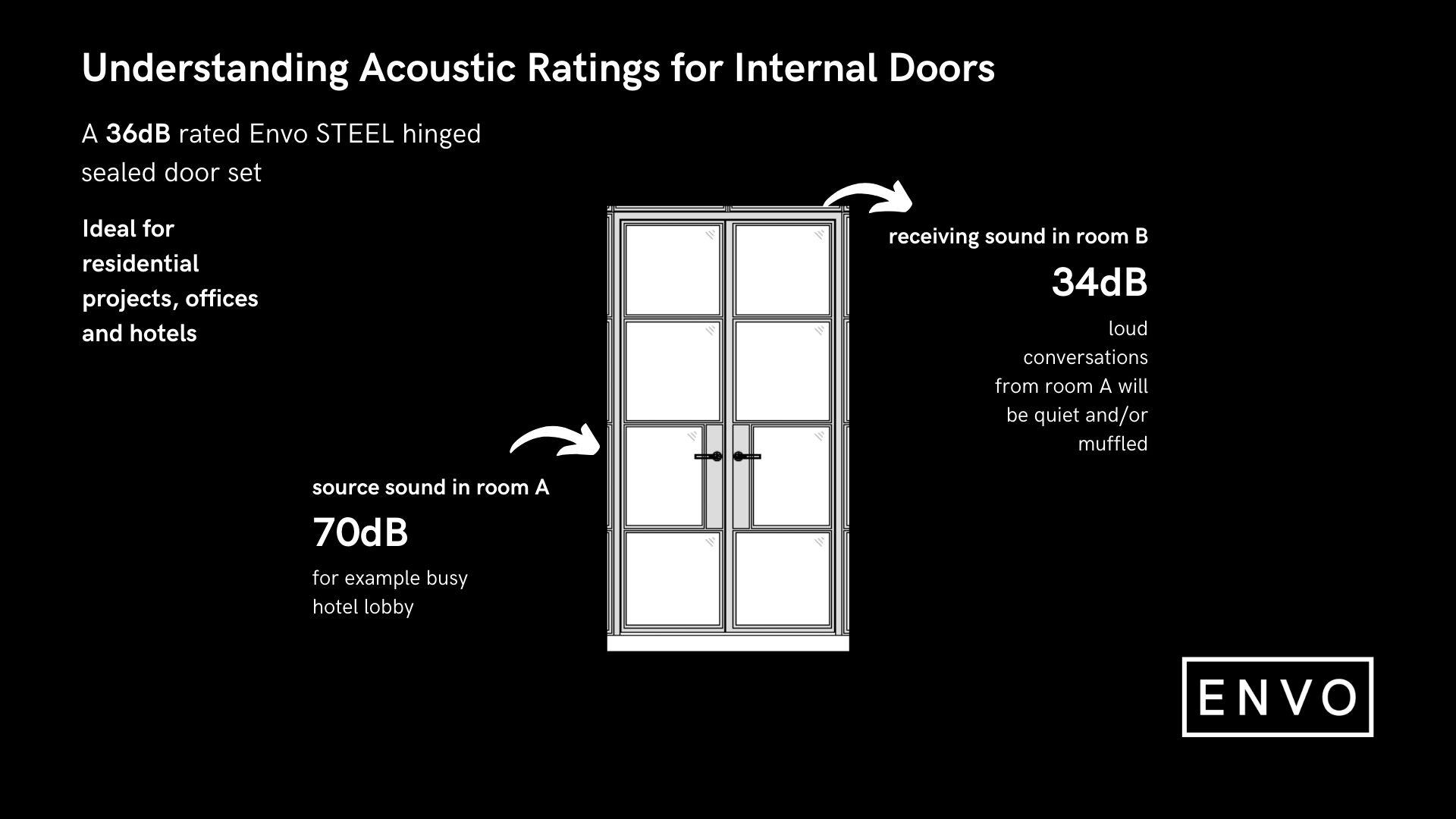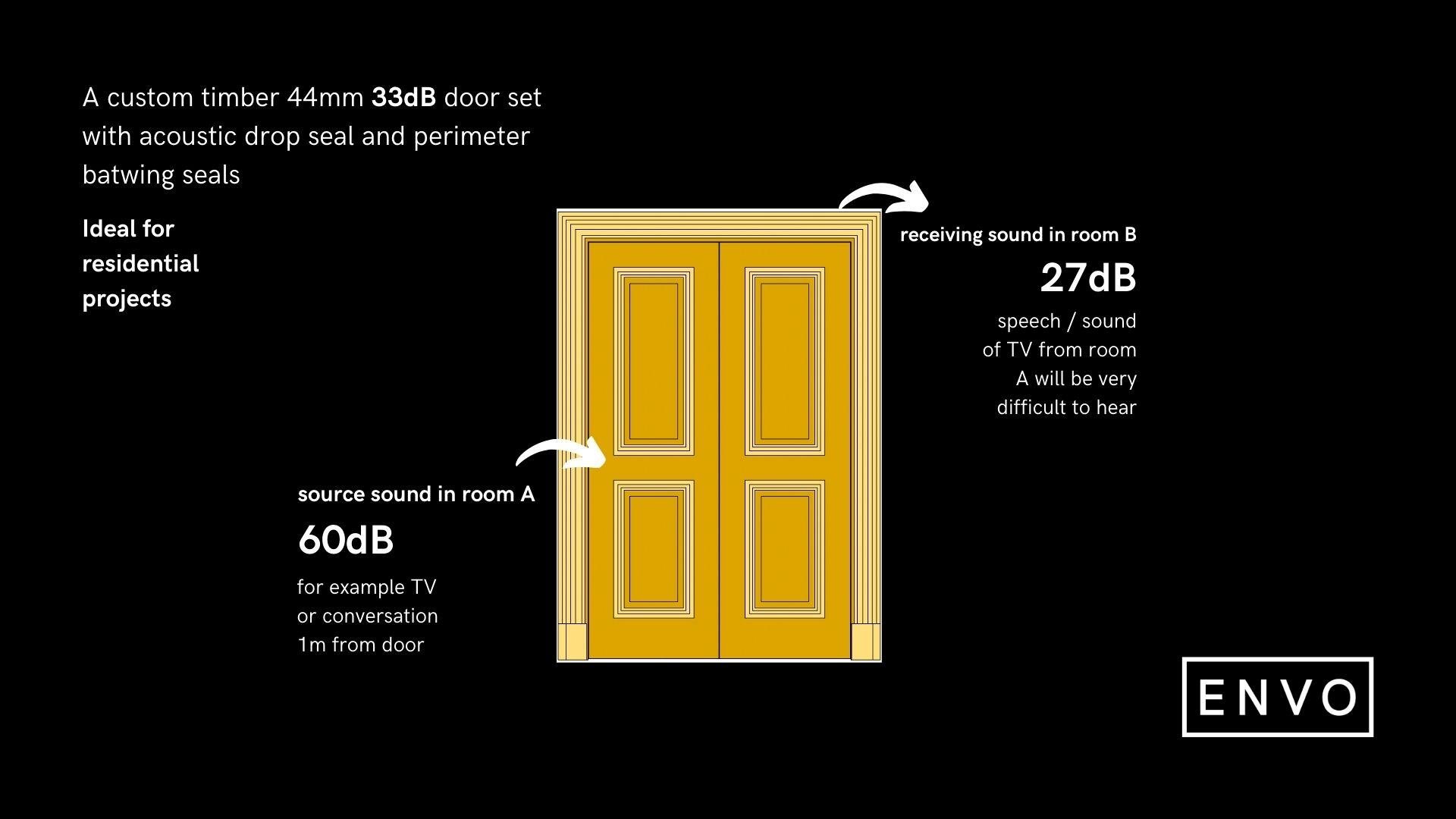Understanding acoustic door ratings for private residences and hospitality projects

Decibels (dB), the pressure or forcefulness of sound, is measured logarithmically rather than linearly meaning there are significant differences between the values. Increasing rapidly - a rise of just 10dB equates to a tenfold increase in the sound pressure level. So, if near silence is measured at 0dB, a 10dB sound is 10 times louder and a 20dB sound is 100 times louder than the original near silence. To put these figures into perspective we have listed a few examples of sounds and their related dB.
|
Sound |
Average dB |
|
Softest sound a human ear can hear |
0 dB |
|
Calm breathing |
10 dB |
|
Very calm room |
20 - 30 dB |
|
Normal conversation at 1m |
40 - 60 dB |
|
Washing machine, dishwasher |
50 - 53 dB |
|
TV at 1m / background music |
approx. 60 dB |
|
Average office |
60 dB |
|
Busy restaurant |
85 dB |
|
City traffic from inside a car |
85 dB |
|
Automatic hand dryer |
100 dB |
|
Dog barking |
110 dB |
|
Nightclub |
105 - 110 dB |
|
Fireworks |
140 - 160 dB |
Spatial planning will be your first port of call when considering the effects of sound on a private residence or hospitality setting, but if you need to allow for considerable noise reduction you might be thinking of sourcing acoustic doors. Here is what you can expect from average household (unrated) doors through to acoustic rated doors:
|
Noise reduction by dB |
Effect of reduction |
|
20 dB (standard household or office doors) |
Normal conversation audible. |
|
25 dB |
Normal conversation quieter and/or muffled. |
|
30 dB |
Normal conversation very difficult to hear. Loud conversation mostly audible. |
|
35 dB |
Loud conversation quiet and/or muffled. |
|
40 dB |
Loud conversation very faintly audible. |
|
45 dB |
Loud conversation almost inaudible. Shouting faintly audible. |
NB: as you move towards the higher end it is increasingly important to ensure the flanking structures are constructed to suitable acoustic ratings.
Although high acoustic ratings have their place within healthcare and entertainment environments, they’re not necessarily the best choice for residential or hospitality projects, here’s why:
- The higher the dB rating, the higher the depth of the door, taking you out of the standard 44mm or 54mm
- Additional structural support may be required to withstand the load of an acoustic rated door
- Likely increased cost of both the door set and any additional work required
As a general rule, an internal door with a rating of 30dB is ideal for a residential setting, higher ratings of 35 dB or more are suitable for busy commercial or hospitality settings.
The below diagrams show the reduction of dB when using an Envo acoustic rated internal door.


To achieve a higher dB rating on a timber door, the depth can be increased, for example a single or double door without glazing could achieve a rating of 41 dB at a thickness of 59mm.
It’s important to note that acoustic rated doors need to be manufactured as a full door set. Although an acoustic door blank can be used for both flush and pocket doors, it would not be classified as acoustic rated, however it would of course improve sound dampening.
To find out more about specifying acoustic rated internal doors or to find out more about our timber door options, you can speak to a member of the Envo team at info@envo.co.uk or +44 208 253 9342.
You can also find out more about Envo Steel doors here.